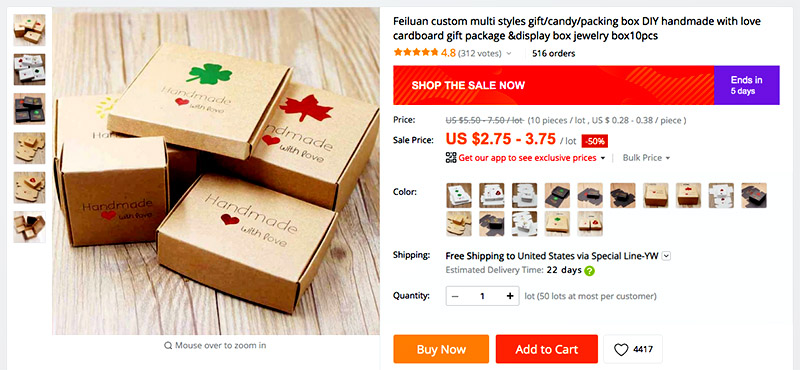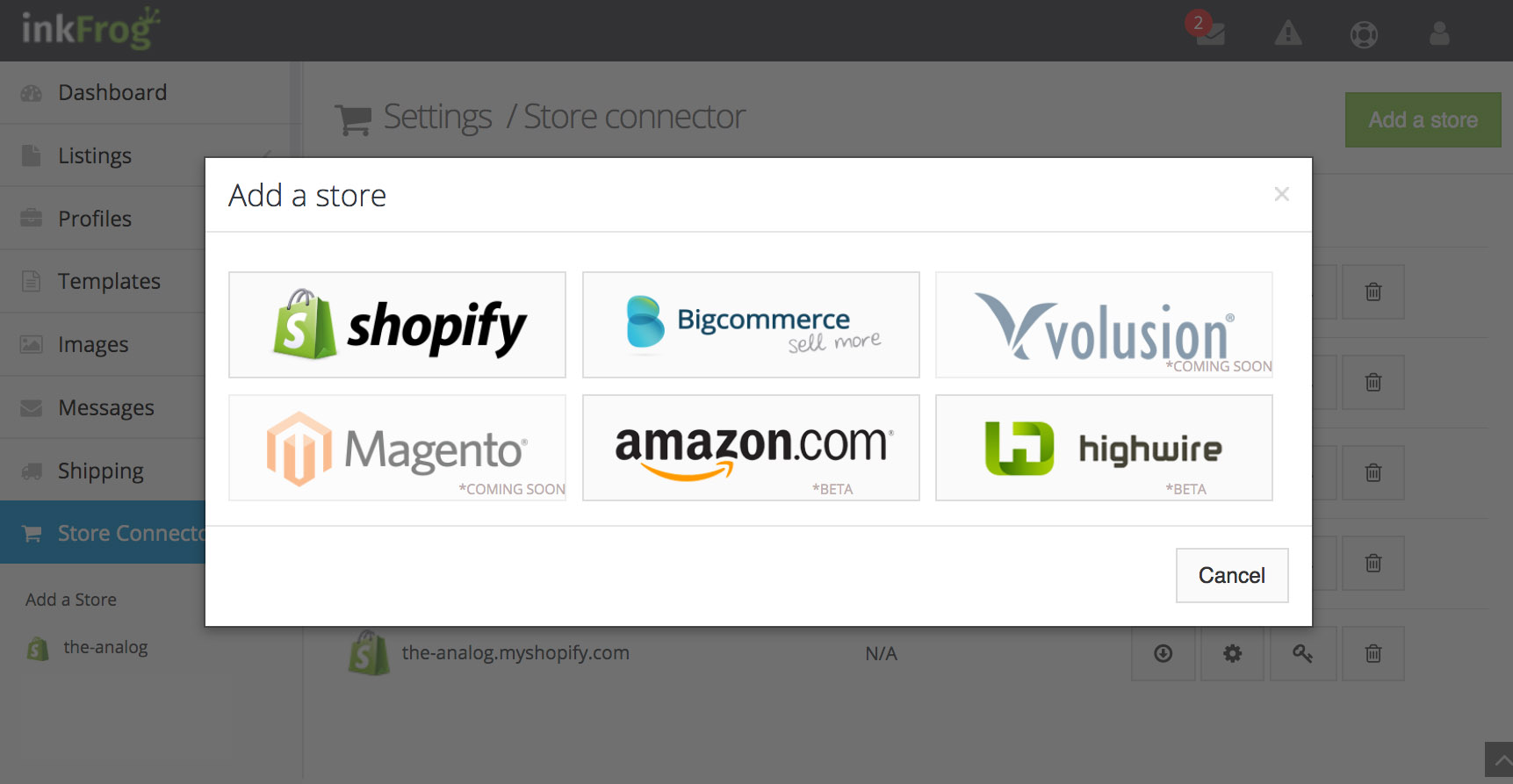10 hidden secrets makers don’t know about selling online
Here are our top ten tips for growing manufacturers looking to set-up an online store and take advantage of the mass consumer drift towards online shopping.
Team Katana

The e-commerce era has made it possible for more people than ever to live the dream — to make things that they love with creativity and care, and to then turn this work into income.
Today, it’s absolutely possible for more and more people — but there are still some basics to master that aren’t always obvious on day one.
If you’re a maker setting out to build your e-commerce empire, here are ten tips to keep in mind that will help to propel you to success.
Here are our top ten tips for growing manufacturers looking to set-up an online store and take advantage of the mass consumer drift towards online shopping.
Making your products look fabulous is step one on the road to success.
1. Photos, photos, photos
Your products are one-of-a-kind, which is a key part of their allure. But this also means that shoppers won’t have encountered them before and don’t know much about their specifics or their quality.
Once they’ve landed on your product, having absolutely fabulous photos, taken with good gear in good lighting and professionally edited to the correct image sizes, will help you to close the deal. You get bonus points for lifestyle-friendly sets (gorgeous living or vacation spaces in the background) or for great light tent work.
2. Detail, detail, detail
What else will help you to close the deal? Great, detailed information on your product pages. Don’t stop at just a headline, or at just one sentence or one brief paragraph.
Try to use bullets (or a bullet-like format) to tell your shoppers all kinds of things, possibly including, but not limited to:
- How it’s made;
- What it’s made from;
- How big it is;
- Aspects of visual appearance;
- How long it will last;
- Other products it complements; and
- Lifestyles and activities it complements.
The fewer nagging questions shoppers have, the more desire will outweigh doubt — leading to a purchase.
3. Differentiate yourself
There are very few absolutely new products in the world today. Chances are that whatever it is you’re making, there’s something else on the market that’s similar in some way and that shoppers could buy instead.
So, take the time to demonstrate why they should buy yours.

Don’t stop at one kind of product. Make and sell the other things that best accompany them.
Don’t feel like this has to be a feature-by-feature comparison based on numbers or other measurable things.
Maybe your products are made with your own loving hands. Maybe they’re preferred by nine out of ten fairies.
Maybe if Han Solo was real, yours would be his product of choice.
The point is to make a statement — and to show that both you and your products are different from the others that shoppers are considering buying from.
4. Accessorize
Whatever you’re making and selling, there’s a good chance that there’s another kind of product it could go well with. And since your products are originals, shoppers might have trouble finding accessories.
That’s not a bad thing. It’s an opportunity for you to make and sell more stuff.
So, if you’re making wooden furniture, offer matching cushions. If you’re selling custom phone cases, offer matching keychains or wallets. If you’re offering 3D-printed dragon figures, also offer 3D-printed display stands.
Sell the product. Then sell the accessories. Your shoppers will be delighted.
5. Remember the unboxing experience
It’s easy to get caught up in what you’re making and to forget about how you’re delivering and presenting it. If you spend all the care in the world on your product, but then deliver it in a zip-seal baggie, you’re letting yourself — and your shoppers — down.
Custom printed boxes and other packaging ideas can now be had for pennies each on places like AliExpress. Investing in them is also investing in your brand, your products, and your customer base.

Less than thirty cents a box? Totally common. Great unboxing materials are within the reach of most makers’ margins and budgets these days.
A delightful product packaged in a so-so way is merely a “satisfied customer.” A delightful product delivered in a delightful way is an evangelist — for you.
6. Advertise
This one is tricky because it’s so often done wrong — but it’s important to do it and to do it right.
Use paid advertising on social media and on Google to promote your products to just the right people. Target shoppers and regions that look like the customers you already have and show off your products.
If you can get thrilled customers to make a selfie video of themselves gushing about your product, even better. Make it. Advertise with it. Launch social media campaigns that provide special deals to shoppers that share you far and wide.
The point is to not wait for shoppers to find you, but for you to go out and find shoppers.
7. Prepare early to scale
Your first sales as a maker can feel like you’ve become a success overnight.
This can quickly turn into the sinking feeling of overnight collapse if you find that you run out of time to earn more money simply because you’re making process doesn’t enable you to make enough things to meet demand.
So, from the moment you begin to see sales, also begin to search for ways to streamline and organize your making process.

Believe that you’re going pro—and set up your workshop and your workflows to enable you to do it properly and to scale with demand.
You don’t have to give up on “made with care” and head straight for “assembly line,” but you should certainly find ways to optimize, outsource, or accelerate things that aren’t central to the value of your products.
Get tools such as Shopify order management system. Or begin to source pre-prepped raw materials. Or train an assistant. Or set up your workbench so that it’s faster and easier to go from one step to the next. Or move production from your kitchen table to a dedicated room in the house.
The details are up to you, but the goal is to be able to sell 100 things a month when the time comes, rather than finding yourself frustrated and stuck at 10 things a month with 90 lost orders.
8. Seek legal advice early
One of the entrepreneurial truths about e-commerce is that the moment anyone makes money doing anything at all, 100 or 1,000 copycats will jump in and try to do the same thing to earn a piece of that pie.
There is no more deflating feeling than to see someone else profiting from your creativity by making and selling exactly what you created from whole cloth with blood, sweat, and tears.
So as soon as you begin to see success, figure out what you can protect legally with trademarks, copyrights, or patents. Look to protect your brand, your products, your process, and anything else that makes your products special.
If you wait until you see the clones, it’s too late. You need to protect yourself before the cloning begins.
9. Sell everywhere
Don’t get stuck with one sales venue. If your product is resonating with shoppers, you want to reach as many as you can, within your ability to serve them.
So, continue to operate your Etsy or Shopify store and website as your online HQ, absolutely. But add eBay. Or Amazon. Or both. After all, there are hundreds of millions of shoppers on each of these marketplaces and many of them shop only on their marketplace of choice.

With the right tools, you’ll be able to turn the work that you do on your Shopify store into sales on other platforms as well.
Don’t they deserve the greatness of the things that you make, too? We think they do. But be sure to find tools which can help you with inventory management such as Shopify order tracking.
Which brings us to the next and final tip.
10. Get tools to help you as you sell everywhere
Don’t try to reach the entire internet with the sweat of your own brow. By tripling the number of places where you sell, you can easily triple the non-making work that you have to do to operate your business.
That wasn’t your goal when you started all of this.
So get tools — inkFrog is one very popular example, but there are others — that can enable you to do most of your non-making work on one place and that will then copy or synchronize your work to all of the other places where you sell as well, giving you one place to do the work of selling through many channels.
As a maker, few things will feel more satisfying to you than succeeding on eBay, on Amazon, and on your own website without feeling overwhelmed at all — just edified by the degree to which people appreciate the things that you make.
Isn’t that what living the dream is all about?
Team Katana
Table of contents
Get inventory trends, news, and tips every month
Get visibility over your sales and stock
Wave goodbye to uncertainty with Katana Cloud Inventory — AI-powered for total inventory control